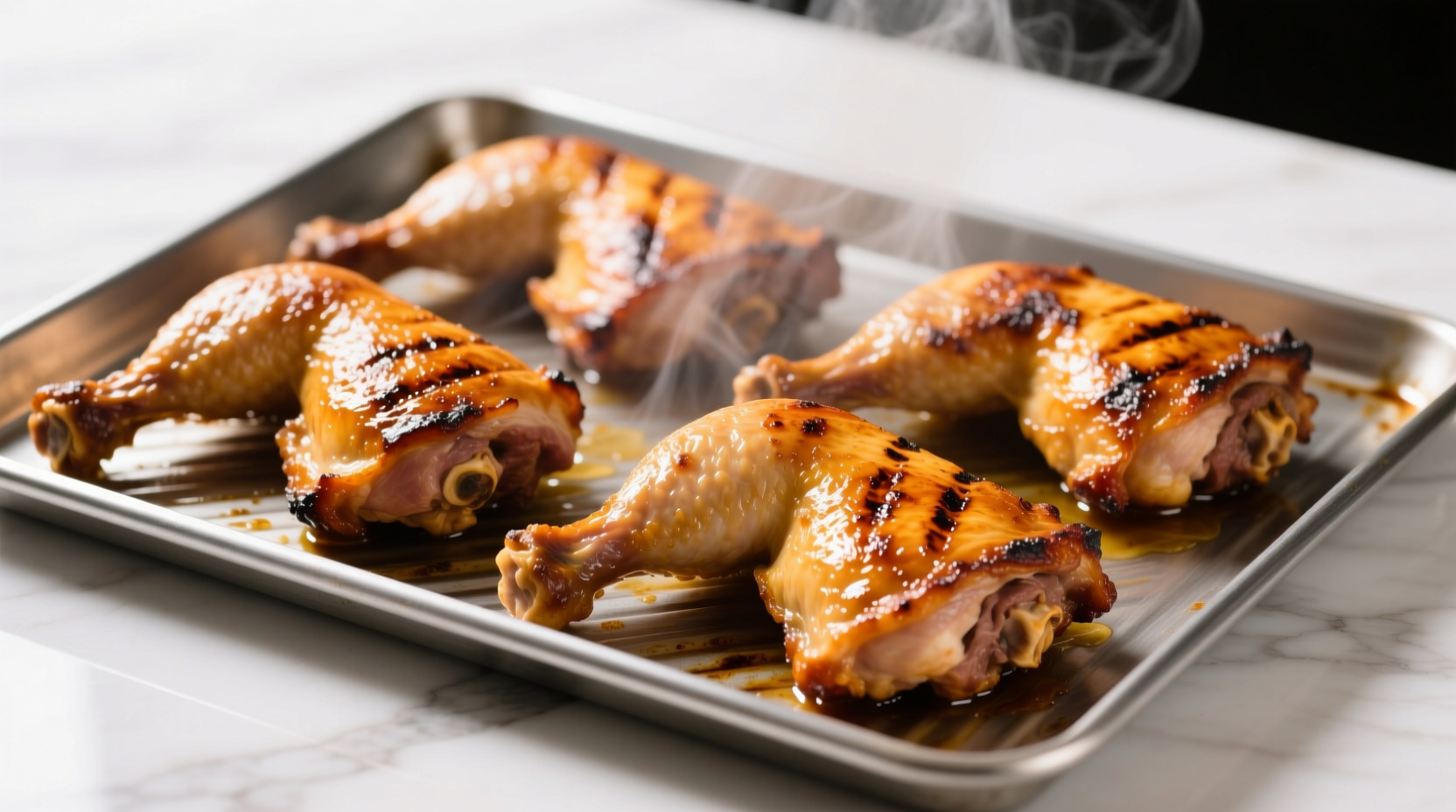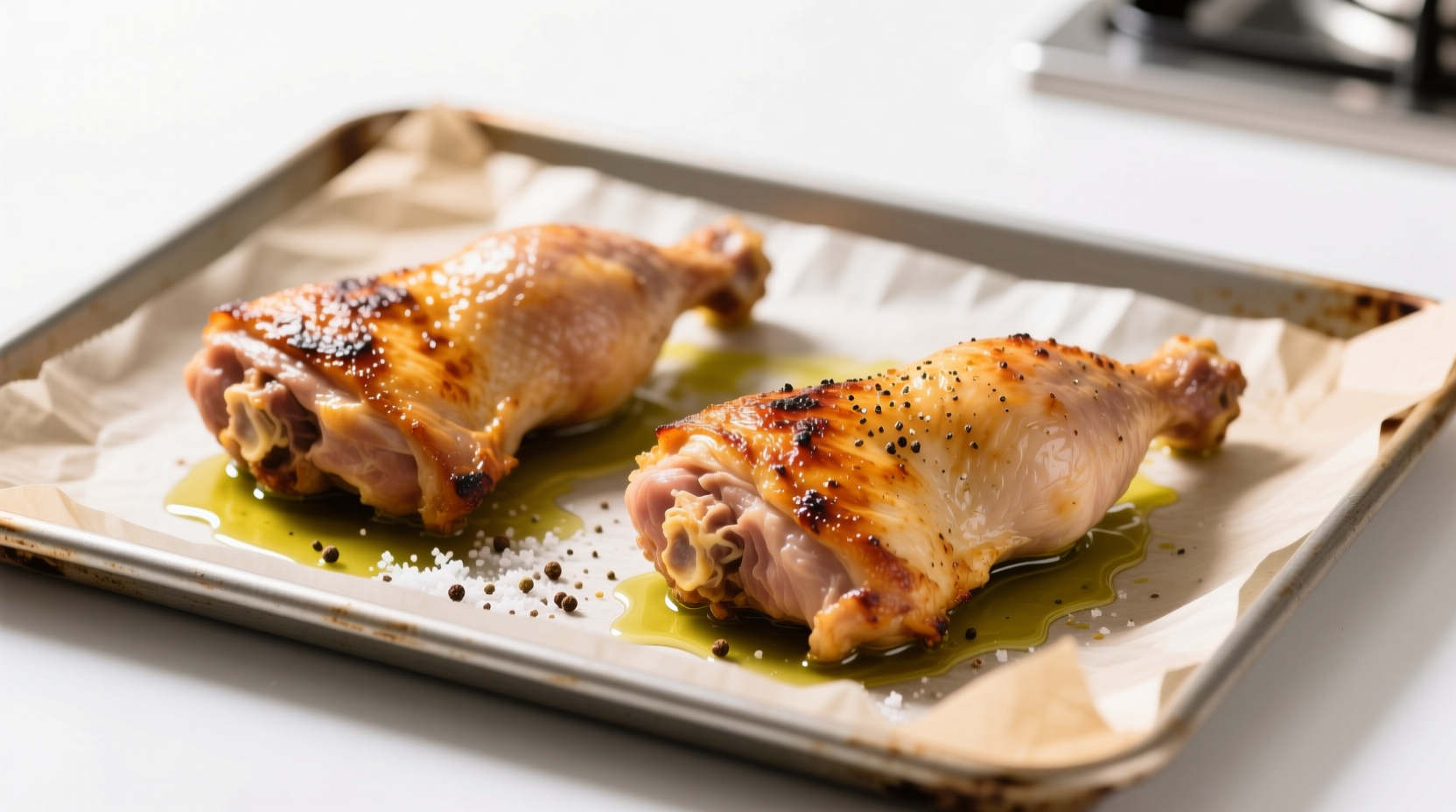Discover exactly how long to cook chicken thighs in the oven for perfectly juicy, flavorful results every time. Whether you're using bone-in or boneless thighs, cooking at 375°F or 425°F, this guide provides precise timing, temperature guidance, and professional techniques to achieve restaurant-quality chicken at home.
The Essential Chicken Thigh Cooking Reference
Before diving into details, here's your quick-reference guide for oven-baked chicken thighs. These times apply to preheated ovens with thighs arranged in a single layer on a baking sheet:
| Type of Chicken Thigh | Oven Temperature | Cooking Time | Internal Temperature |
|---|---|---|---|
| Bone-in, skin-on | 400°F (204°C) | 35-45 minutes | 165°F (74°C) |
| Boneless, skin-on | 400°F (204°C) | 25-35 minutes | 165°F (74°C) |
| Bone-in, skin-on | 375°F (190°C) | 45-55 minutes | 165°F (74°C) |
| Boneless, skin-on | 375°F (190°C) | 35-45 minutes | 165°F (74°C) |
These time ranges account for variables like starting temperature (chilled vs. room temperature) and oven accuracy. Always use a meat thermometer for final verification, as visual cues alone can't guarantee safety.
Why Chicken Thigh Cooking Times Vary
Understanding the factors that affect cooking time helps you adapt to your specific situation. Unlike chicken breasts, thighs contain more fat and connective tissue, making them more forgiving but requiring attention to detail.
Bone Presence and Skin Coverage
Bone-in thighs take approximately 10-15 minutes longer than boneless because the bone acts as a heat conductor, slowing the cooking process while helping retain moisture. USDA Food Safety and Inspection Service confirms that bone-in poultry requires additional cooking time but often results in juicier meat (USDA FSIS).
Skin-on thighs develop a crispy exterior while protecting the meat from drying out. If you've removed the skin, reduce cooking time by 5-7 minutes to prevent overcooking.
Oven Temperature Impact
Higher temperatures (400-425°F) create beautiful browning and crispy skin while maintaining interior juiciness. Lower temperatures (350-375°F) require longer cooking but can be preferable when roasting with vegetables. The American Council for Culinary Education notes that higher heat methods preserve more natural juices in dark meat poultry.
Step-by-Step Perfect Chicken Thigh Method
Follow this professional technique for consistently excellent results:
Preparation (5 minutes)
- Pat thighs dry with paper towels (critical for crispy skin)
- Season generously with salt, pepper, and preferred spices
- Let sit at room temperature for 15-20 minutes before cooking
Cooking Process (35-45 minutes)
- Preheat oven to 400°F (204°C) with rack in the center position
- Arrange thighs skin-side up on a rimmed baking sheet
- Cook for 20 minutes, then rotate the pan for even cooking
- Check internal temperature at 30 minutes for boneless, 35 for bone-in
- Continue cooking in 5-minute increments until reaching 165°F (74°C)
Resting (5-10 minutes)
Never skip resting! This allows juices to redistribute. Tent loosely with foil and let stand before serving. The internal temperature will rise 3-5°F during this time due to carryover cooking.

Troubleshooting Common Issues
Dry Chicken Thighs
If your thighs turn out dry despite following timing guidelines:
- You likely overcooked them by 5+ minutes
- The oven temperature may run hot (calibrate your oven)
- Consider brining for 1-4 hours before cooking for extra insurance
Undercooked or Unsafe Chicken
Food safety is paramount. The USDA's Food Safety and Inspection Service states that poultry must reach 165°F (74°C) to eliminate harmful bacteria like salmonella. If your thermometer reads below this:
- Return to oven and check every 3-5 minutes
- Never rely solely on color or texture
- Insert thermometer into thickest part, avoiding bone
Skin Not Crispy Enough
For perfectly crispy skin:
- Ensure skin is thoroughly dried before seasoning
- Cook at 400°F or higher
- Place on a wire rack over the baking sheet
- Broil for 1-2 minutes at the end (watch carefully)
Pro Tips for Flavor Variations
Once you've mastered basic timing, experiment with these flavor-enhancing techniques:
Simple Marinades (30 minutes minimum)
- Lemon-herb: Olive oil, lemon juice, garlic, thyme, rosemary
- Spicy yogurt: Plain yogurt, cumin, paprika, cayenne, garlic
- Soy-ginger: Soy sauce, rice vinegar, ginger, sesame oil, honey
Dry Rubs (Apply 15 minutes before cooking)
- Smoky paprika blend: Paprika, garlic powder, onion powder, cumin
- Herbes de Provence: Thyme, rosemary, oregano, marjoram, lavender
- Cajun spice: Cayenne, garlic powder, onion powder, thyme, oregano
Advanced Timing Considerations
Professional chefs adjust cooking times based on these often-overlooked factors:
Starting Temperature Matters
Thighs straight from the refrigerator require 5-8 minutes longer than those brought to room temperature. Food science research from the Culinary Institute of America shows that starting at room temperature promotes more even cooking throughout the meat.
Thickness Variability
Not all thighs are created equal. Thicker thighs may need up to 10 minutes longer than thinner ones. Always check multiple pieces, as size variation is common.
Oven Accuracy Testing
Use an independent oven thermometer to verify your oven's actual temperature. Many home ovens vary by 25°F or more from the set temperature, significantly impacting cooking times.











 浙公网安备
33010002000092号
浙公网安备
33010002000092号 浙B2-20120091-4
浙B2-20120091-4